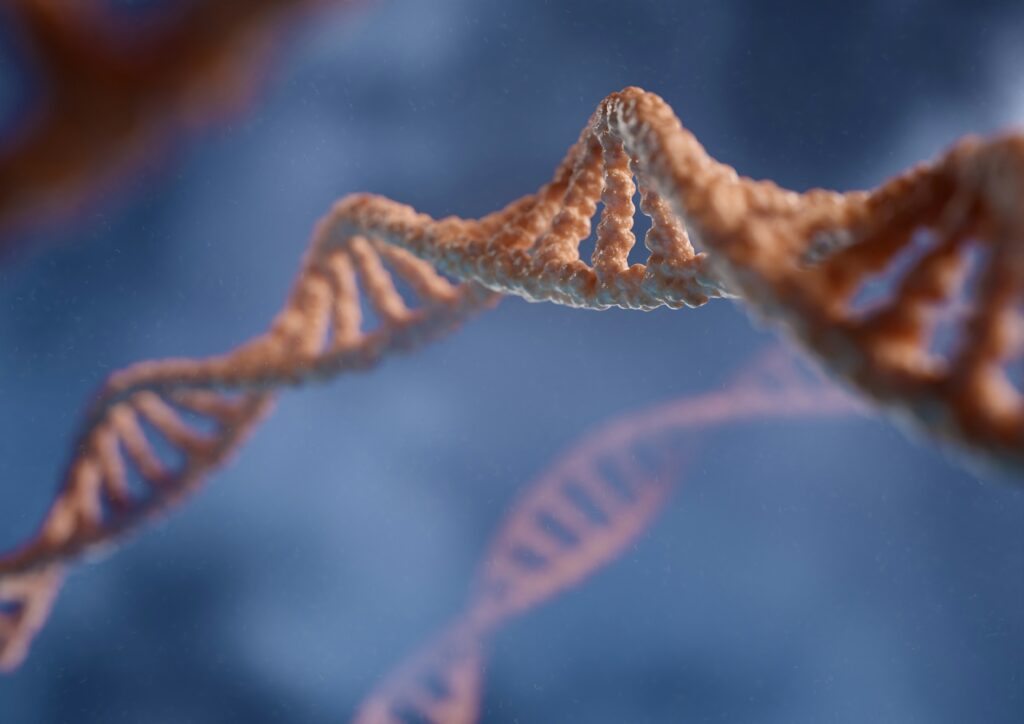Should the content of bilirubin exceed normal values, then it is a sign that the liver, gallbladder, or red blood cells have a problem. The attention of the hospitals is largely on the bilirubin high levels that can cause jaundice. At the same time, the low bilirubin levels have their implications as well that are usually unnoticed. The level of bilirubin indicates the normal physiology and the potential pathology of a patient.
Bilirubin is a yellow pigment arising in the course of normal red blood cell destruction. The hemoglobin of red blood cells, which is the oxygen-carrying pigments, breaks down to biliverdin and finally to bilirubin very quickly. This bilirubin is termed the indirect or unconjugated bilirubin and is insoluble in water.
The unconjugated bilirubin, which is in the form of blood and binds to albumin, is then brought to the liver. When in the liver cells, it interacts with glucuronic acid to form a direct or conjugated type of bilirubin. This type is water-soluble and can be excreted in bile.
Bilirubin changes to urobilinogen owing to the action of intestinal bacteria when it is incubated in the intestinal tract. A part of urobilinogen is then combined with the feces, which then becomes brown in color, while a small part is reabsorbed and removed through the urine of the person. The total bilirubin in the blood consists of a mixed bag of conjugated and unconjugated types of bilirubin.

A person having indications of liver disease, like jaundice, exhaustion, dark urine, or pale stools, must definitely take a bilirubin test. Jaundice, in which the color of the skin and the eyes turns yellow, serves as the pivotal indicator of increased bilirubin levels. This happens when bilirubin accumulates in the tissues. It is a result of liver malfunction or an excessive red blood cell breakdown.
Baby testing for bilirubin in the first few days of life is normally a necessary thing. Their little livers sometimes are immature and fail to break the bilirubin properly which in turn causes neonatal jaundice. This is an acute condition that is usually mild. However, it can result in a dangerous situation if the levels are too high.
Young adults at risk of hepatitis, alcoholism, or gallbladder diseases should also get tested. The ones with specific blood disorders such as sickle cell anemia or hereditary spherocytosis have to do the tests more often. Patients who undergo chemotherapy, who are taking drugs that are hepatotoxic, or who suffer from unexplained fatigue can also benefit from this kind of testing.
A routine blood test will be a method mostly used. This procedure is usually performed in a clinical, laboratory, or hospital setting. A doctor will be the one who cleans the skin on the patient’s hand, inner elbow, or back of the hand. Prior to being taken, the upper arm will be tied with a tourniquet that will make the veins more visible.
A sterile needle will be used to draw blood from the patient and the blood will be dispensed into a tube that is sterile. The needle wound will be covered with a bandage after it is removed. After the blood sample is taken away, it will be subjected to lab analyses in the laboratory.
Typically, the results of the blood test are available within one day. Such findings are correlated to the outcomes from other liver tests which include ALT, AST, and alkaline phosphatase, among others.
The range of normal total bilirubin is usually about 0.1 to 1.2 mg/dL in regular adults. Although there can be some discrepancies in the results of different laboratories.
The process is very safe and very rare are the cases of side effects. Surely, if the puncture place is a bit bruised, or the person feels sore, it is all very insignificant. It is of extreme importance to mention to your doctor any medications you are currently taking. Some health conditions can also alter the testing results

Bilirubin testing preparation is usually quite easy. In most cases, patients are requested to fast for 8 to 12 hours prior to the blood draw. Fasting can assist in getting more precise readings, particularly when the test is one of various liver function panel tests.
Having a meal may increase bilirubin levels in some individuals minimally, and hence not eating before guarantees steadiness. The patient's hydration and the easy blood draw are the aims; hence, drinking plenty of water is advisable. Patients should also abstain from alcohol for 24 hours before the test. It can temporarily impact their liver enzymes as well as their bilirubin.
It is necessary to inform the health care provider of their ongoing medications or the supplements they are using. Certain medicines, such as antibiotics, antivirals, and anti-inflammatory medicines, have a direct effect on bilirubin metabolism. Patients should not hide over-the-counter drugs like acetaminophen, which can also cause bilirubin metabolism to change.
If it's a baby who is about to have the test done, parents may be given recommendations related to calming the infant down. Distractions during the blood draw, e.g., feeding or pacifiers, will help reduce stress for the baby, and the application of the preparation steps ensures that the most accurate results are obtained and the need for retesting is minimized.
High bilirubin or hyperbilirubinemia is a very familiar and still current clinical issue. One common effect of it is jaundice. It is commonly linked to liver diseases, bile duct obstructions, or rapid red blood cell damage. The model of an unconjugated bilirubin increase is indicative of possible hemolytic anemia or Gilbert's syndrome. Conjugated bilirubin increase may be a sign of, for example, hepatitis or blocked by the bile duct obstruction.
To put it in another way, unlike hyperbilirubinemia, which is the not-so-frequent medical term, hypo- or hyperbilirubinemia, as often called, is less investigated or paid attention to. In most healthcare operations, it is hardly ever seen as a problem to solve; however, its presence may indirectly provide a hint of some hidden diseases. Low bilirubin may be also caused by such things as low red blood cell turnover, higher enzyme activity in the liver, or even intake of certain medications. It can also be due to genetic variations that are the main reason for increased bilirubin clearance.
The available data supports the thesis that lower bilirubin levels can be perceived as a result of reduced antioxidant capacity. It is widely accepted that bilirubin, which is beneficial for protecting cells from oxidative stress, has a less important, but still existing role in the process. If an individual has these lower levels on a regular basis, it can be inferred that that person is susceptible to such conditions as cardiovascular disease or metabolic diseases.
While high bilirubin typically triggers urgent medical attention, low bilirubin is often unnoticed unless it occurs as part of a wider issue. Regardless, having knowledge of both ends of the spectrum will serve as a helpful tool in understanding patients' liver and metabolic health.
Blood testing may be the most common method of diagnosis to find the real cause of low bilirubin. Often, low bilirubin is not a sign of a severe condition. In fact, sometimes, it is simply a normal and also a temporary situation. Age, gender, and hormones are the factors that can cause an altered bilirubin level. The presence of estrogen in the oral contraceptives used by women, and especially those with higher levels, can create a situation whereby the liver conjugates bilirubin more.
In a similar vein, athletes and those with high metabolic rates, whose exciting concept is simply burning more calories while resting, may have lower bilirubin because their liver functions are better. The genetic factor of human beings has also contributed to this problem. For example, the alteration in liver enzymes, whose genes are found in people with diverse ethnic backgrounds is one of the factors leading to the diversity of the problem of low bilirubin. However, the changes described here are not very significant. Accordingly, the values found in labs are generally within the normal limits.
Usually, there is no need to address the issue of low bilirubin caused by the abovementioned factors. However, there may be a reason if the person has signs/symptoms or other abnormal lab findings. In addition, for many people, low bilirubin is just an example of biological diversity rather than a disease.
Net result, and more rarely, low bilirubin comes about as a result of genetic or acquired medical conditions. A good way to envisage the typical situation here is that a person has some kind of a yet-unidentified mutation in the DNA of some of his/her cells that causes the double-time accelerated bilirubin metabolism. Therefore, such a person will have a lower circulating level of bilirubin. However, at the same time, the antioxidant power of the affected person will be reduced. That is due to the excessive transformation of bilirubin.
A decrease in the bilirubin level is also observed in diseases like aplastic anemia in which the body's bone marrow stops producing enough blood cells. Moreover, it's evident that a sick person or a malnourished person will have a decreased renewal of old red cells, which will lead to a low level of bilirubin.
Low bilirubin levels are linked to the body's inability to fight oxidative stress, although it is scarcely studied. Bilirubin acts as a protecting antioxidant, eliminating the negative effects of free radicals in the body. Reducing the level of bilirubin can lead to the body being more vulnerable to aging, inflammation, and chronic disease.
A small number of research papers reveal the association between low bilirubin levels and the possibility of higher risks of cardiovascular disease along with a variety of neurodegenerative diseases.

In a situation where the cause of low bilirubin is due to lifestyle or nutrition, one could look into improving his or her diet as a solution for the problem. The presence of sufficient protein and iron in the body is very important for the healthy production of red blood cells. Such foods as leafy greens and cruciferous vegetables can also be beneficial. They provide the liver with support and bile secretion. Thereby, they might increase the metabolism of bilirubin.
Exercise is beneficial to the liver, which can regulate unwanted substances such as bilirubin in the body in the normal way. However, the intake of alcohol and other liver-damaging drugs has to be avoided as it is also a significant factor.
Only in a few instances, the use of drugs that reduce bilirubin clearance may be taken into account. Atazanavir, an example of an HIV drug, inhibits the UGT1A1 enzyme and thus increases the unconjugated bilirubin. Still, its use is not only that of low bilirubin treatment, but the drug has also several detrimental consequences. Such a drug is predominantly used in experiments.
Herbal supplements such as milk thistle or artichoke extract have been the subject of various research about liver wellness. While these supplements have not been proven to have an effect on the bilirubin level, they are good for general detoxification. Furthermore, the anti-inflammatory approach could be useful in situations where low bilirubin is among many outcomes of a chronic illness.
Regular monitoring gives an indication of the intervention's effectiveness. Regular check-ups after a couple of months are useful to mark any patterns and the maintenance of the liver function at a given level. Furthermore, the patients should be prepared to give an account of new symptoms or changes in the medication to the doctors.
Quality is a priority in the use of supplements. Unlabelled products may carry toxins that may result in liver conditions being aggravated. It is necessary to do further tests in cases where bilirubin levels do not change. For instance, testing may disclose more hidden causes or other simultaneous conditions.
Table of Contents